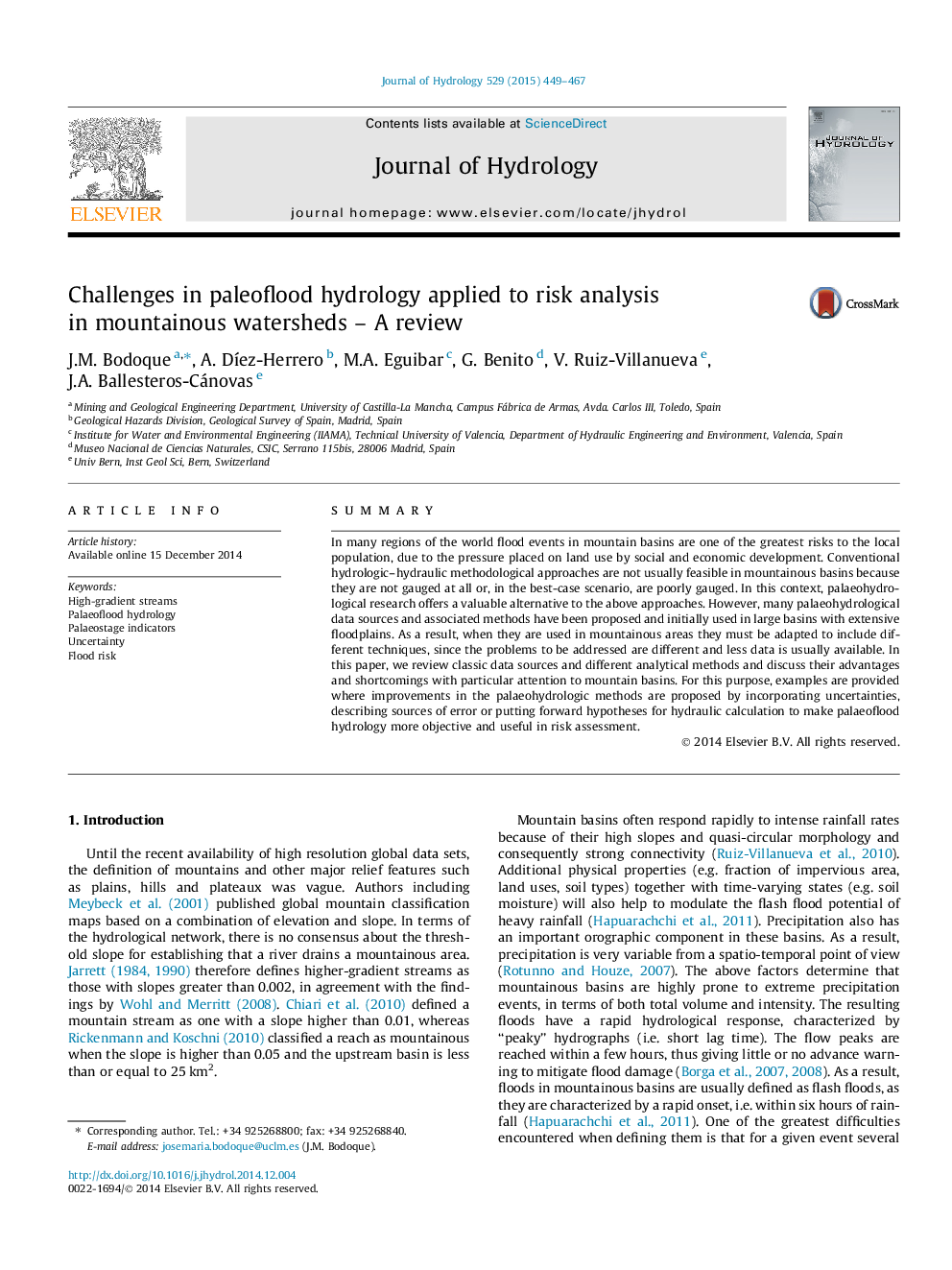| Article ID | Journal | Published Year | Pages | File Type |
|---|---|---|---|---|
| 4575919 | Journal of Hydrology | 2015 | 19 Pages |
•We critically review paleoflood hydrology focused on mountainous basins.•We discuss limitations and sources of error regarding paleoflood hydrology.•Importance of incorporating uncertainty in paleofloods methods is discussed.•Integration of paleoflood hydrology in the risk analysis approach is proposed.•Future research lines in paleoflood hydrology are presented.
SummaryIn many regions of the world flood events in mountain basins are one of the greatest risks to the local population, due to the pressure placed on land use by social and economic development. Conventional hydrologic–hydraulic methodological approaches are not usually feasible in mountainous basins because they are not gauged at all or, in the best-case scenario, are poorly gauged. In this context, palaeohydrological research offers a valuable alternative to the above approaches. However, many palaeohydrological data sources and associated methods have been proposed and initially used in large basins with extensive floodplains. As a result, when they are used in mountainous areas they must be adapted to include different techniques, since the problems to be addressed are different and less data is usually available. In this paper, we review classic data sources and different analytical methods and discuss their advantages and shortcomings with particular attention to mountain basins. For this purpose, examples are provided where improvements in the palaeohydrologic methods are proposed by incorporating uncertainties, describing sources of error or putting forward hypotheses for hydraulic calculation to make palaeoflood hydrology more objective and useful in risk assessment.
